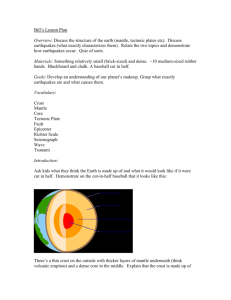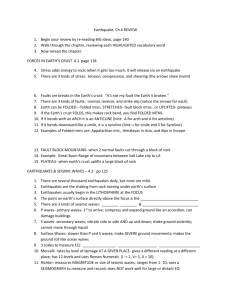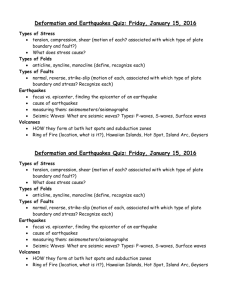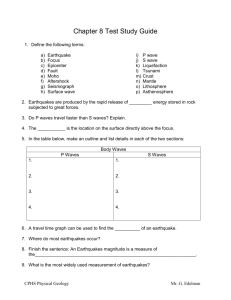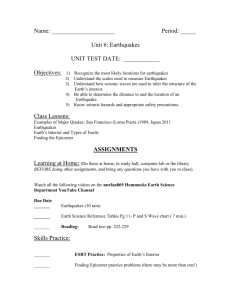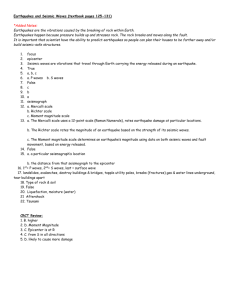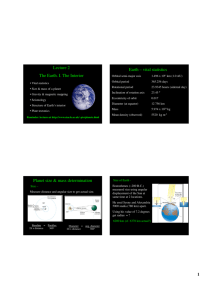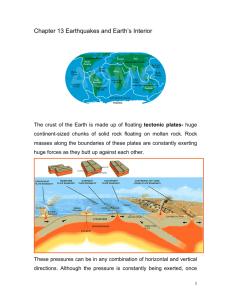What Causes Earthquakes
advertisement
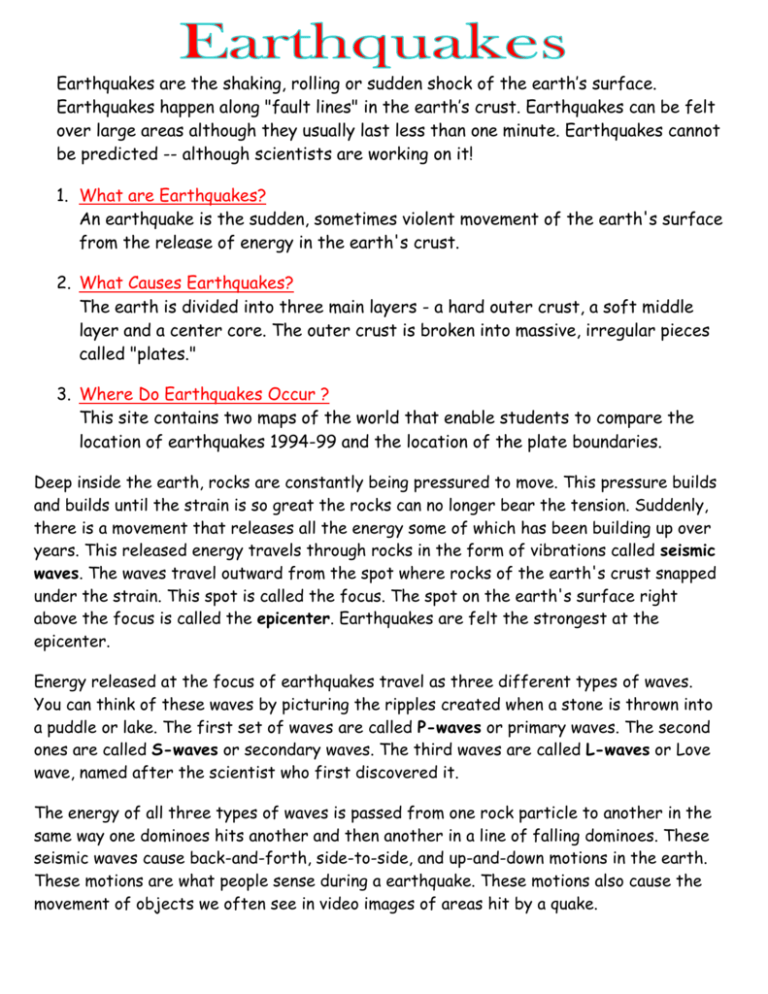
Earthquakes are the shaking, rolling or sudden shock of the earth’s surface. Earthquakes happen along "fault lines" in the earth’s crust. Earthquakes can be felt over large areas although they usually last less than one minute. Earthquakes cannot be predicted -- although scientists are working on it! 1. What are Earthquakes? An earthquake is the sudden, sometimes violent movement of the earth's surface from the release of energy in the earth's crust. 2. What Causes Earthquakes? The earth is divided into three main layers - a hard outer crust, a soft middle layer and a center core. The outer crust is broken into massive, irregular pieces called "plates." 3. Where Do Earthquakes Occur ? This site contains two maps of the world that enable students to compare the location of earthquakes 1994-99 and the location of the plate boundaries. Deep inside the earth, rocks are constantly being pressured to move. This pressure builds and builds until the strain is so great the rocks can no longer bear the tension. Suddenly, there is a movement that releases all the energy some of which has been building up over years. This released energy travels through rocks in the form of vibrations called seismic waves. The waves travel outward from the spot where rocks of the earth's crust snapped under the strain. This spot is called the focus. The spot on the earth's surface right above the focus is called the epicenter. Earthquakes are felt the strongest at the epicenter. Energy released at the focus of earthquakes travel as three different types of waves. You can think of these waves by picturing the ripples created when a stone is thrown into a puddle or lake. The first set of waves are called P-waves or primary waves. The second ones are called S-waves or secondary waves. The third waves are called L-waves or Love wave, named after the scientist who first discovered it. The energy of all three types of waves is passed from one rock particle to another in the same way one dominoes hits another and then another in a line of falling dominoes. These seismic waves cause back-and-forth, side-to-side, and up-and-down motions in the earth. These motions are what people sense during a earthquake. These motions also cause the movement of objects we often see in video images of areas hit by a quake.
